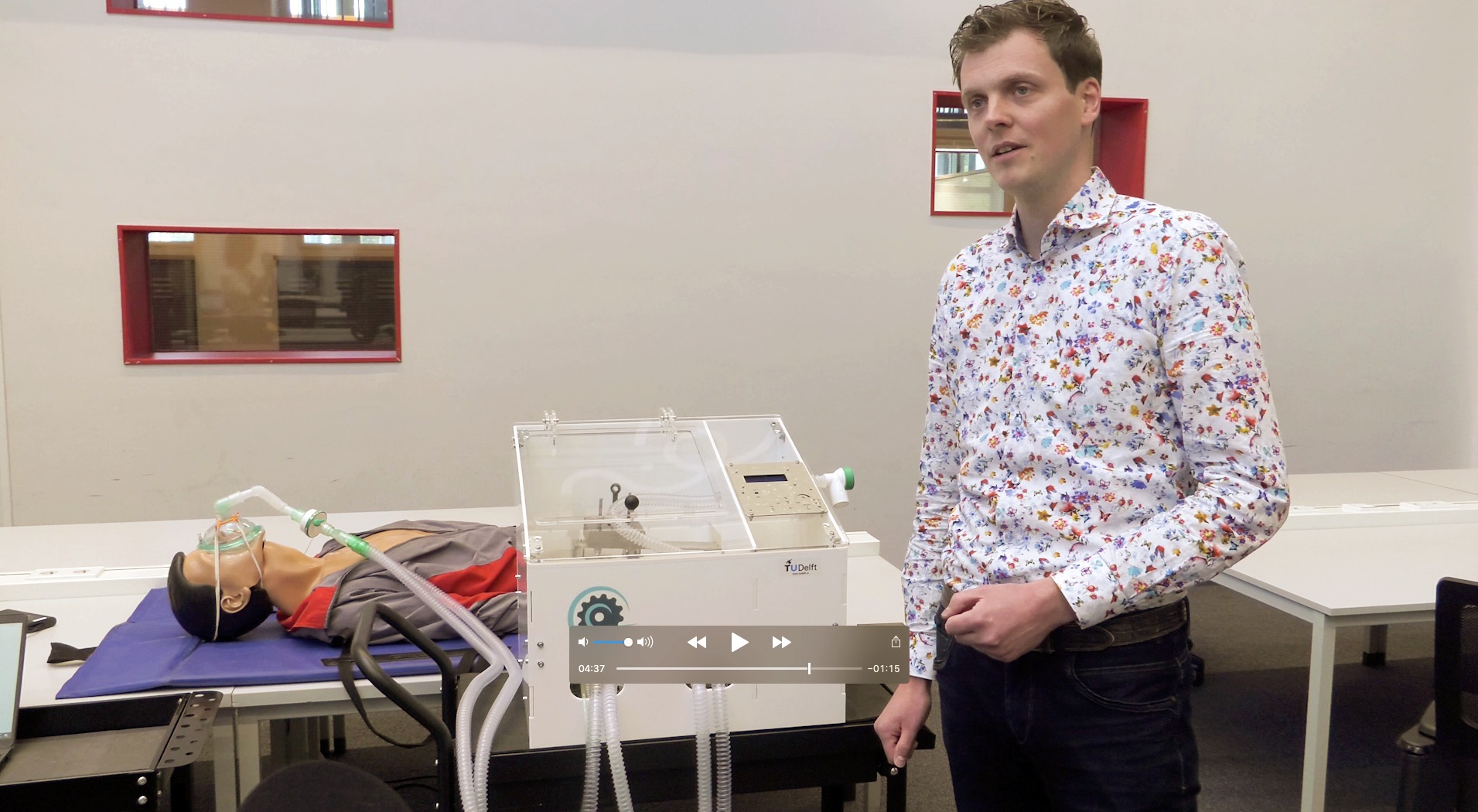Driven by an impending shortage of ventilators, TU researcher Gerwin Smit looked for inspiration at a classic machine that had proven its merit.
Gerwin Smit presents the renewed respirator. (Still from TU Delft TV)
Smit found an English ventilator from the 1960s in the collection of the Boerhaave Museum in Leiden. It was the East-Radcliffe Positive-Negative Respirator. Museum Director Amito Haarhuis not only gave Smit permission to take the machine to Delft, but also to take it apart. “It is a sturdy machine that was built from readily available parts,” said Haarhuis. He points at the pressure cooker that humidifies outgoing air, and a bicycle gear hub that allows the machine to ventilate at different speeds. A stack of weights on the bellows sets the outgoing pressure.
After about a week, the 40 person team from Project Inspiration had rebuilt the old machine with new parts, including a shiny new gear hub. Next, they built a more modern prototype that is driven by an electric motor with variable speed. So the gear hub was gone, but the pile of weights and the pressure cooker remained. They also added new valves.
The article continues below the video.
Do you have a question or comment about this article?
j.w.wassink@tudelft.nl


Comments are closed.